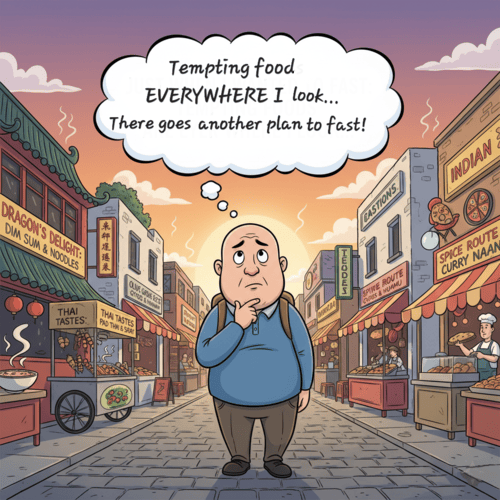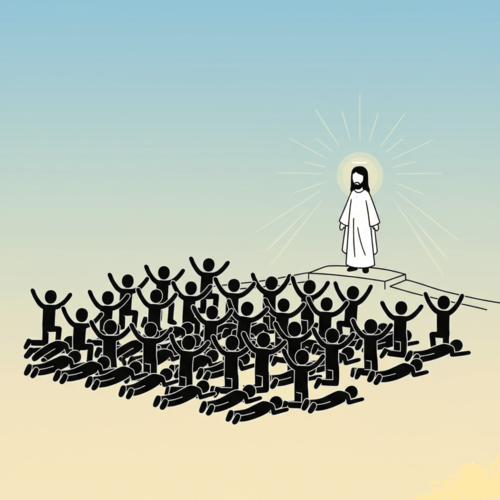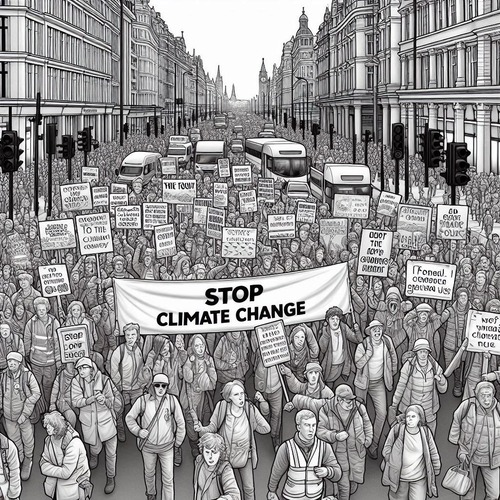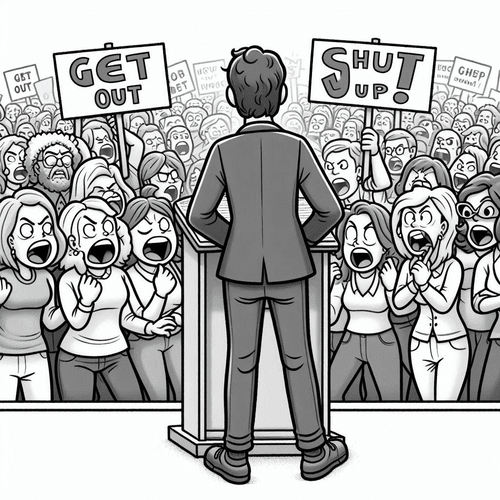Climate Change: Human-Caused or Natural Variation?
Climate change has become one of the most politically charged scientific topics of our time. While mainstream media and many institutions present human-caused climate change as settled science, there are legitimate reasons to question whether current climate patterns truly represent an unprecedented crisis requiring dramatic economic transformation.
Join us we examine evidence that suggest natural factors may play a more significant role in climate change than the scientific consensus appears willing to acknowledge…
HISTORICAL CLIMATE PATTERNS: NOTHING NEW UNDER THE SUN
The Earth’s climate has never been static. Long before industrialisation, our planet experienced significant warming and cooling periods. The Medieval Warm Period (950-1250 CE) saw temperatures comparable to today’s in many regions, enabling Viking settlements in Greenland and vineyards in northern England. This was followed by the Little Ice Age (1300-1850), when Europe endured harsh winters, crop failures, and frozen rivers.
These natural fluctuations occurred without human CO2 emissions—well, at any rate, not to the extent we have now. This demonstrates the Earth’s climate system responds to complex natural drivers that operate independently of human activity. The current warming trend began around 1850, coinciding with the end of the Little Ice Age—suggesting a potential natural recovery pattern rather than purely human influence.
TEMPERATURE RECORDS: QUESTIONABLE DATA, QUESTIONABLE CONCLUSIONS
Modern temperature records merit close scrutiny. Many weather stations once located in rural areas are now surrounded by urban development, creating artificial warming signals known as the “urban heat island effect.” When adjustments are made for these effects, the warming trend appears less dramatic.
Satellite temperature measurements, available since 1979, often show less warming than surface-based records. The satellites provide more comprehensive global coverage than ground stations do. The latter, at best, are unevenly distributed and leave vast areas—particularly oceans—under-sampled.
Additionally, historical temperature reconstructions rely heavily on proxy data (tree rings, ice cores) that introduce significant uncertainties when making precise claims about past temperatures. These uncertainties are rarely communicated alongside alarming headlines.
NATURAL DRIVERS: THE OVERLOOKED FORCES
The sun, our primary energy source, experiences cycles of activity that correlate with Earth’s temperature patterns. While mainstream climate science often downplays solar influence, research continues to explore connections between solar cycles, cosmic rays, cloud formation, and climate.
Oceanic cycles represent another powerful natural climate driver. The Pacific Decadal Oscillation (PDO), Atlantic Multidecadal Oscillation (AMO), and El Niño-Southern Oscillation (ENSO) redistribute enormous amounts of heat throughout the planet on decadal timescales. When these cycles synchronise in certain patterns, global temperature trends can shift significantly—with minimal or no human input.
Water vapour, Earth’s most abundant greenhouse gas, plays a complex role through cloud formation that can either warm or cool the planet. Our understanding of cloud dynamics, let’s face it, remains one of climate science’s acknowledged weak points.
CLIMATE CHANGE MODELS: PROJECTIONS VS. REALITY
Climate policy relies heavily on computer models projecting future warming. However, these models have consistently overestimated warming compared to actual observations. This “model-observation gap” raises questions about whether models exaggerate CO2’s warming effect while underestimating natural factors.
Many models failed to predict the “warming hiatus” observed in the early 2000s, when temperatures plateaued despite rising CO2 levels. While various explanations have been offered, this episode highlighted the limitations of our understanding of climate systems.
Climate sensitivity—how much warming results from doubled CO2—remains uncertain. Early estimates suggested 3-4.5°C, but some recent studies indicate lower values of 1.5-2°C, which would significantly reduce projected warming rates and associated concerns.
ECONOMIC AND POLICY CONSIDERATIONS: BALANCING PRIORITIES
Even if human activities contribute to warming, the proposed policies often carry enormous economic costs while delivering minimal climate benefits. Developing nations understandably prioritise lifting their populations from poverty through affordable energy access—primarily from fossil fuels that powered development in the West.
A more balanced approach would focus on adaptation strategies while pursuing energy innovation without crippling economic growth. History shows wealthy societies are more resilient to climate challenges than impoverished ones.
CONCLUSION: THE CASE FOR CLIMATE PRAGMATISM
The climate change narrative has evolved from scientific inquiry into a political movement with quasi-religious elements—complete with unquestionable dogma and moral condemnation of sceptics. True science thrives on questioning, debate, and continuous reassessment of evidence.
Natural climate variability deserves greater consideration in climate discussions. While human activities certainly affect our environment in many ways, the case for catastrophic human-caused warming remains less certain than commonly portrayed. Policy responses should reflect this uncertainty rather than embracing costly transformations based on potentially flawed models.
As we continue monitoring climate trends and improving scientific understanding, maintaining perspective and rational debate will serve us better than alarmism. Earth’s climate history suggests our planet’s systems are more resilient—and natural influences more powerful—than many acknowledge in today’s polarised climate conversation.
CLIMATE CHANGE: RELATED FAQs
Why do so many scientists claim there is a consensus on human-caused climate change? Scientific institutions often cite a “97% consensus” figure, but this statistic has methodological flaws and includes many scientists who believe humans have some influence on climate without necessarily agreeing on catastrophic predictions. Professional pressure, funding priorities, and publication bias create environments where challenging prevailing views becomes professionally risky. Many scientists who question aspects of climate orthodoxy report difficulty publishing alternative perspectives or facing career repercussions.
- What about extreme weather events? Aren’t they increasing due to climate change? While media coverage of weather disasters has dramatically increased, long-term data shows little to no statistically significant trends in frequency for most extreme weather events. Hurricane frequency has not increased globally, and some studies indicate fewer droughts during the present warming period compared to the colder Little Ice Age. When adjusted for population growth and development in vulnerable areas, economic losses from weather events as a percentage of GDP have actually reduced over time.
- Isn’t the Arctic ice melting at unprecedented rates? Arctic sea ice has indeed declined since satellite measurements began in 1979, but this period started near a relative maximum in ice extent. Historical records and proxy data suggest similar low Arctic ice periods during the early 20th century and Medieval Warm Period. Meanwhile, Antarctic sea ice has shown complex patterns with recent record highs offsetting some Arctic losses, suggesting regional processes rather than simple global warming effects.
- What about rising sea levels threatening coastal communities? Sea levels have been rising gradually (1-2mm per year) since the end of the Little Ice Age, long before significant human CO2 emissions. This rate hasn’t accelerated dramatically despite increased emissions, and much of the apparent acceleration comes from adjustments to satellite data. The most vulnerable coastal areas face greater threats from natural land subsidence and inappropriate development practices than from climate-related sea level changes.
- How can you explain the correlation between CO2 increases and temperature rises? Correlation doesn’t prove causation, and closer examination of ice core data reveals that temperature increases typically preceded CO2 increases by hundreds of years during past climate cycles, suggesting CO2 as an effect rather than cause of warming. The modern correlation is complicated by the coincidental timing of natural warming cycles with industrialisation, and temperature hasn’t risen as steadily as CO2 levels have. This indicates other factors are at play.
- If natural variability explains recent warming, why can’t scientists identify the natural mechanism? Scientists have identified several potential natural mechanisms, including solar cycle effects, ocean circulation patterns, and cloud dynamics, but research funding heavily favours human-centred climate studies over natural variability investigations. The complex, chaotic nature of climate systems means multiple interacting natural factors likely contribute to climate changes in ways our current modelling capabilities cannot fully capture or predict with confidence.
What about the precautionary principle—shouldn’t we act just in case human-caused climate change is real? The precautionary principle cuts both ways—costly climate policies create real harm to human welfare through higher energy costs, reduced economic growth, and diverted resources from immediate humanitarian needs. True precaution means weighing all risks, including the danger of impoverishing societies that would be more vulnerable to climate challenges regardless of their cause. Adaptability through economic development represents a more balanced precautionary approach than dramatic emissions reductions.
CLIMATE CHANGE: OUR RELATED POSTS
Editor's Pick

‘Flee Sexual Sin’: Why Does Paul Single This Sin Out?
When the apostle Paul writes to the Corinthian church, he doesn’t tell them to simply avoid sexual immorality or resist [...]

Does Denying God’s Sovereignty Mean Denying the Gospel?
RC Sproul once warned denying God’s sovereignty “eviscerates” grace—a strong word meaning to gut or disembowel something, leaving only an [...]

Why Christians Fast: The Biblical Discipline’s Very Real Rewards
Why would Christians, who rejoice in the good gifts of food and fellowship, deliberately choose to go without? Isn’t fasting [...]

The Christian Sabbath: Why Did Sunday Replace Saturday?
Consider this: God-fearing Jews who’d faithfully observed Saturday Sabbath for over a thousand years suddenly began gathering for worship on [...]

Did the Early Christians Worship Jesus? The Biblical Evidence
It was a startling transformation: Jewish fishermen who'd spent three years following this itinerant carpenter from Nazareth now begin to [...]

If Jesus is Messiah, Why Aren’t ALL Messianic Prophecies Fulfilled?
If Jesus is truly the Messiah, why hasn't world peace arrived? Why do Jews still face persecution? Why isn't the [...]

When Courage Fails: Will I Be Forgiven If I Deny Christ in Persecution?
The rooster crowed, and Peter remembered. In that devastating moment, the apostle realised he’d just done the unthinkable—three times he’d [...]

What Makes a Godly Dad? 5 Biblical Principles Fathers Need
Modern culture sends fathers mixed messages. Be strong but sensitive. Be involved but not overbearing. Lead but don’t dominate. With [...]

What Makes a Godly Mom? A Scripture-Backed Guide
In our culture’s confusion about gender roles and parenting, the timeless question remains: what makes a godly mother? While secular [...]

Paul’s Mandate for Men: Headship Or Servant Leadership? Or Both?
Modern Christianity has fallen into a trap. We've created an either/or battle between "headship" and "servant leadership," as if these [...]
SUPPORT US:
Feel the Holy Spirit's gentle nudge to partner with us?
Donate Online:
Account Name: TRUTHS TO DIE FOR FOUNDATION
Account Number: 10243565459
Bank IFSC: IDFB0043391
Bank Name: IDFC FIRST BANK






